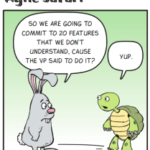 For a long time, “managing up” rubbed me the wrong way. The way that people frequently used the phrase brought to mind judgment, manipulation, and deception. It seemed rooted in a belief that your manager didn’t understand how work got done. Just as I thought “stakeholder management” involved carefully controlling your messaging to always make yourself look good, I believed that managing up was fundamentally unethical.
For a long time, “managing up” rubbed me the wrong way. The way that people frequently used the phrase brought to mind judgment, manipulation, and deception. It seemed rooted in a belief that your manager didn’t understand how work got done. Just as I thought “stakeholder management” involved carefully controlling your messaging to always make yourself look good, I believed that managing up was fundamentally unethical.
I was wrong. Managing up is about partnership.



 Saying someone is a manager tells you little about what they do or where they spend their time. Different companies lay out these duties differently; managers within the same company (or department) sometimes have vastly different jobs. As a manager, having mismatched expectations about your role – particularly with your boss and peers – can have unfortunate results.
Saying someone is a manager tells you little about what they do or where they spend their time. Different companies lay out these duties differently; managers within the same company (or department) sometimes have vastly different jobs. As a manager, having mismatched expectations about your role – particularly with your boss and peers – can have unfortunate results.


 Conflict is a challenging topic for many people to navigate. It’s a natural part of working together in groups, yet in the midst of it, it can feel terribly dysfunctional. There’s no shortage of ideas about how to work through it, and t
Conflict is a challenging topic for many people to navigate. It’s a natural part of working together in groups, yet in the midst of it, it can feel terribly dysfunctional. There’s no shortage of ideas about how to work through it, and t







